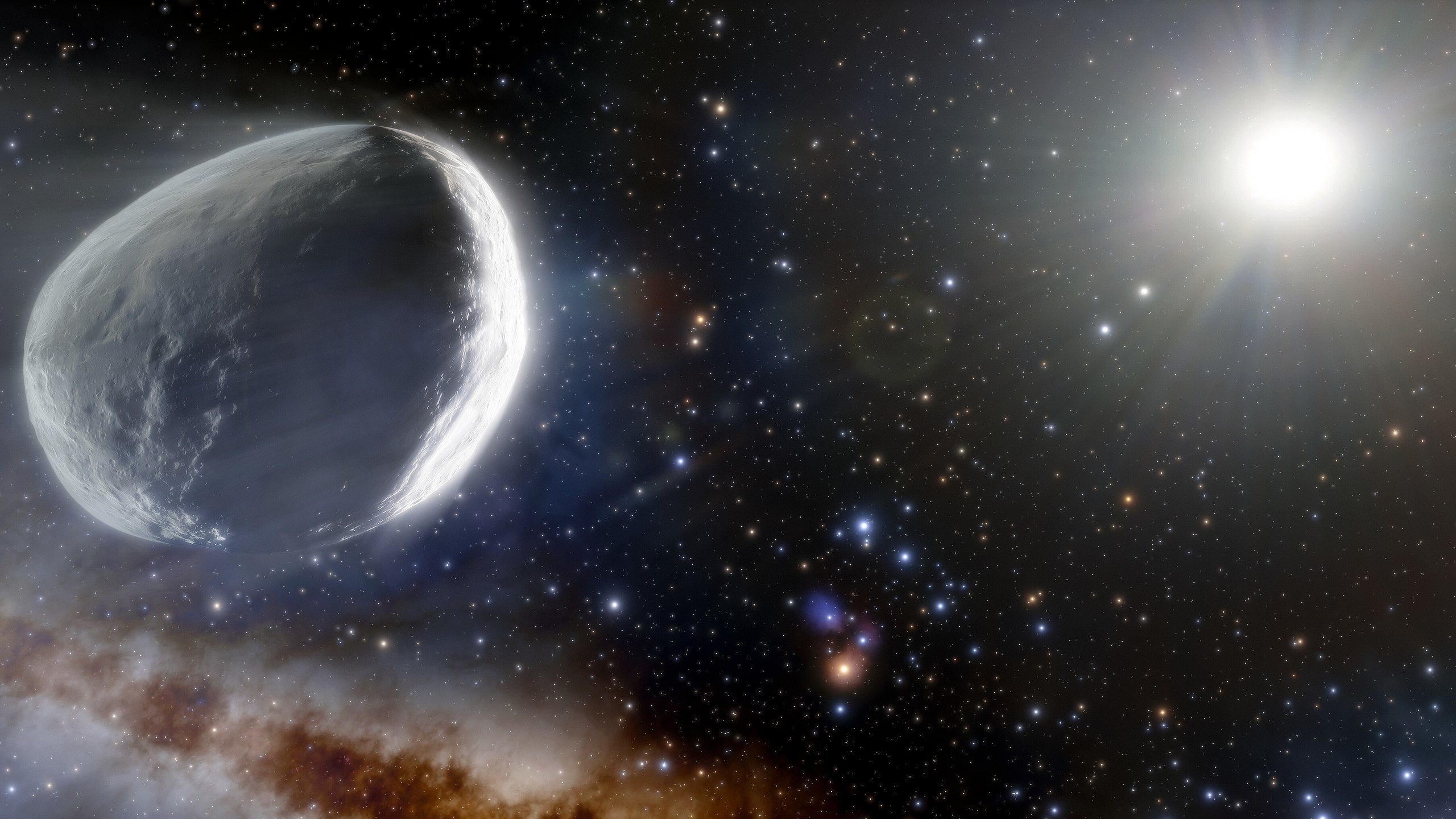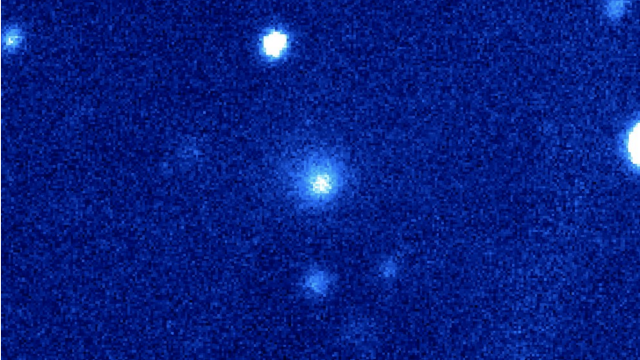Comet Bernardinelli-Bernstein, as it’s now known, won’t make its closest approach to the Sun for another 10 years, but the object is already showing signs of life, as this wonderful new image shows.
Astronomers with the Las Cumbres Observatory acquired this image on the evening of June 22, 2021, confirming the object as an active comet. The incoming Oort cloud object, initially designated minor planet 2014 UN271, has now been re-named Comet C/2014 UN271 Bernardinelli-Bernstein in honour of its two discoverers, Pedro Bernardinelli and Gary Bernstein, both with the Dark Energy Survey.
The LCO released an image of the comet on July 14, showing a cloudy layer surrounding the cometary nucleus. That this object is a comet and not a minor planet — a fancy term for an asteroid — is now becoming increasingly clear.
The comet was detected in Dark Energy Survey data gathered by the Blanco telescope in Chile from 2013 to 2019. Confirmation of the comet’s active status came just three days after the initial announcement of its discovery on June 19. Comets are packed with ice, and this ice begins to sublimate — turn from a solid directly into a gas — as the object nears the Sun.

With an estimated size between 62 and 370 km long (100-370 kilometers), the object has the potential to be among the largest comets ever discovered. The size of comet Bernardinelli-Bernstein’s nucleus still needs to be refined, so it’s still too early to make any definitive proclamation on the matter. If confirmed, however, it could be three times the size of the current record holder, comet Hale-Bopp, which made its close approach in 1995.
Las Cumbres Observatory was well positioned to confirm the object as being a comet. The observatory boasts a network of robotic telescopes around the world, including in the southern hemisphere where views of the object are ideal.
“Since the new object was far in the south and quite faint, we knew there wouldn’t be many other telescopes that could observe it,” explained Tim Lister, staff Scientist at LCO, said in a statement.
The key image was acquired by LCO telescopes located at the South African Astronomical Observatory. Owing to a fortuitous time zone, astronomers in New Zealand — members of the LCO Outbursting Objects Key (LOOK) Project — were the first to spot the tell-tale signs of a comet.
“Since we’re a team based all around the world, it just happened that it was my afternoon, while the other folks were asleep,” said Michele Bannister, an astronomer at the University of Canterbury in New Zealand, in the LCO release. “The first image had the comet obscured by a satellite streak and my heart sank. But then the others were clear enough and gosh: there it was, definitely a beautiful little fuzzy dot, not at all crisp like its neighbouring stars!”
The comet’s active status is a wild result, given its current location some 1.8 billion miles from the Sun. At approximately 20 AU from the Sun (in which 1 AU equals the average distance of Earth to the Sun), the object is currently closer than Neptune (30 AU) but still more than twice as far as Saturn (9.5 AU). It will take another 10 years for Comet Bernardinelli-Bernstein to make its closest approach, at which time it will be 10.95 AU from the Sun. After reaching its perihelion point, the comet will head back to the Oort cloud, in a journey that could take hundreds of thousands and possibly even millions of years.
The comet is already active now, so it’s exciting to think about how it might look in 2031. That said, it probably won’t be visible to the unaided eye, given the tremendous distances involved, but it should be no problem to observe the comet with a telescope. Regardless, the object will provide astronomers with an unprecedented view of an oversized comet and its expected “fireworks display,” as Meg Schwamb, a lecturer at Queen’s University in Belfast, described it to me last month.
As the new image shows, however, we won’t have to wait until 2031 to enjoy this comet and its scientific offerings, as it’s already begun to put on a light show.
